If you love the flavor of sourdough but don’t have time for long proofing times, I developed this sourdough discard bread recipe just for you!
When my family asks for bread at the last minute and I haven’t planned ahead (or I'm just short on time), this is the recipe I make. It’s perfect for busy weeks when I want a airy bread with a rich, tangy flavor but don't have time to make my favorite sourdough bread recipe.
Like my other discard bread recipes, this one captures everything I love about sourdough but is quick and easy. Let me show you how to do it in your own kitchen.
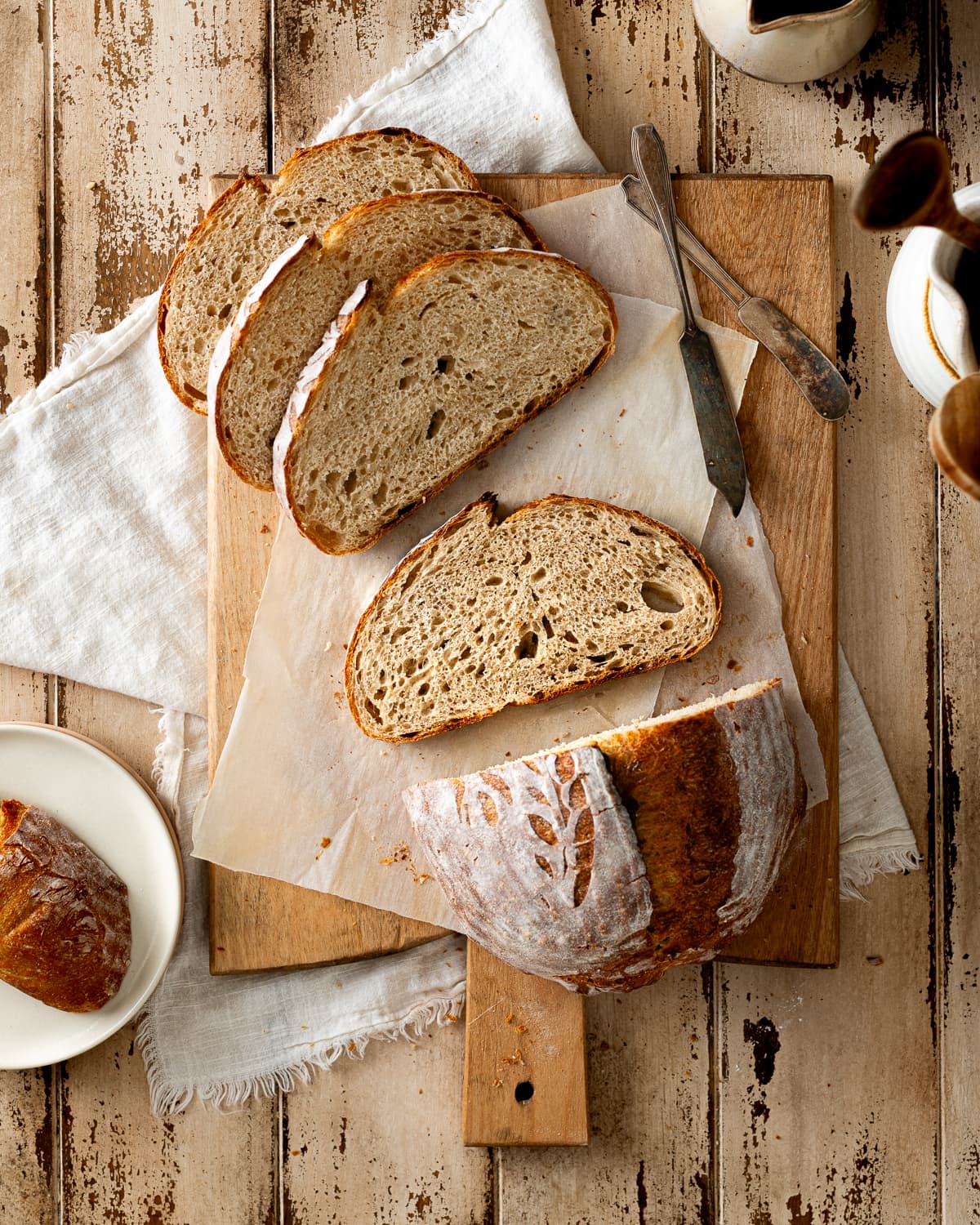
This recipe was originally published in Sept. 2023. I have since added more photos and tips for success.
5-STAR REVIEW
This was my first run through with this recipe and it turned out amazing! I love that this loaf yields a similar structure to a true sourdough loaf with a fraction of the time and effort. Will definitely make again.
Allison
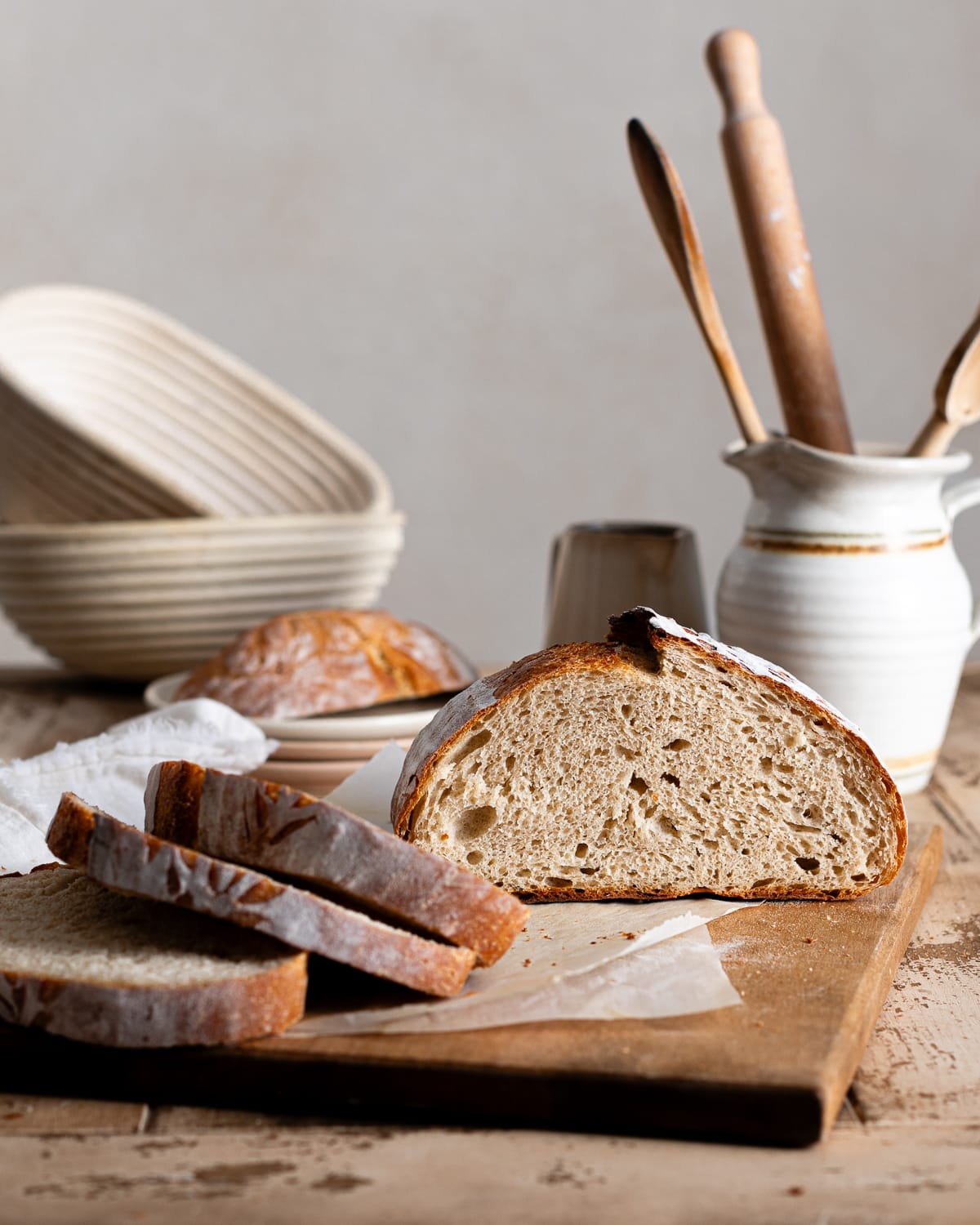
If you’ve seen my recipes for sourdough discard focaccia, sourdough discard pretzels, and sourdough discard sandwich bread, you’ll know how much I love the convenience of combining sourdough discard with commercial yeast. It’s the easiest way to get great flavor without the long rise times.
Ingredients and Substitutions
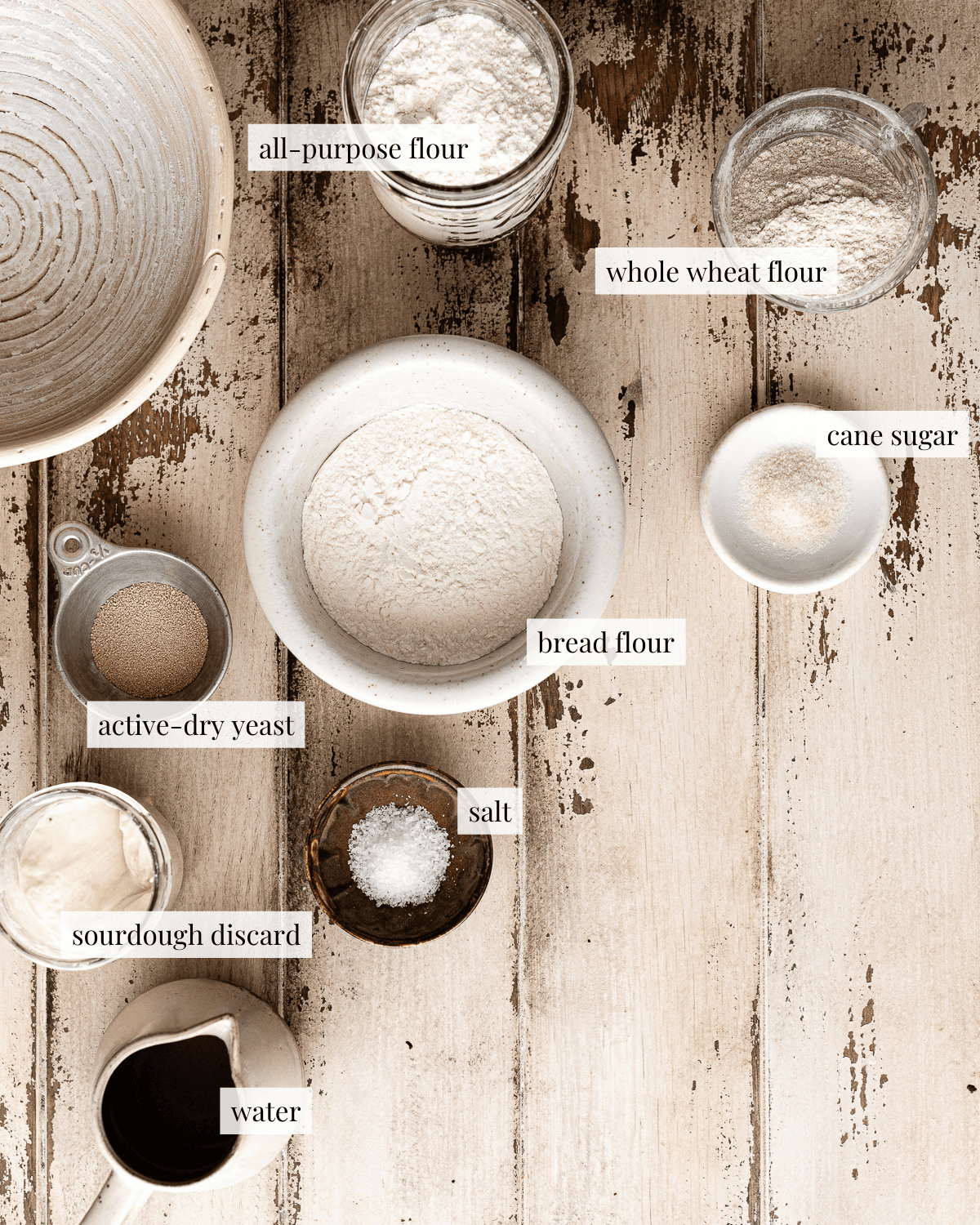
This recipe uses a mix of different types of flours, all-purpose flour, bread flour and whole wheat the ideal mix for flavor and texture. But if you don’t have all three on hand, no problem. You can use just all-purpose or bread flour and still get great results.
Since this recipe uses commercial yeast you can use your sourdough starter straight from the fridge, no need to activate it!
Step-by-step Instructions
STEP 1: Make the dough
Combine water, sugar and active-dry yeast, let the yeast bloom for 15 minutes. Add in the sourdough starter and dry ingredients. Mix until no traces of dry flour remain.

STEP 2: Stretch and fold
Perform 3 sets of stretch and folds in 15-minute intervals during bulk rise. To perform 1 set, use your fingertips pick up one side of the dough and stretch it as far as you can without tearing. Then fold the dough over itself, turn the bowl 90 degrees, and repeat 3 more times (this is one set).

Stretch and Fold Sample Schedule
9:00 a.m. - Fold 1
9:15 a.m. - Fold 2
9:30 a.m. - Fold 3
STEP 3: First rise
After the last fold, allow the dough to rise untouched until doubled in volume.

STEP 5: Bake
Score the dough. Bake in a covered Dutch oven at 475 F for 25 minutes. Remove the cover and bake at for an additional 10 to 15 minutes, depending on how dark you'd like your crust.
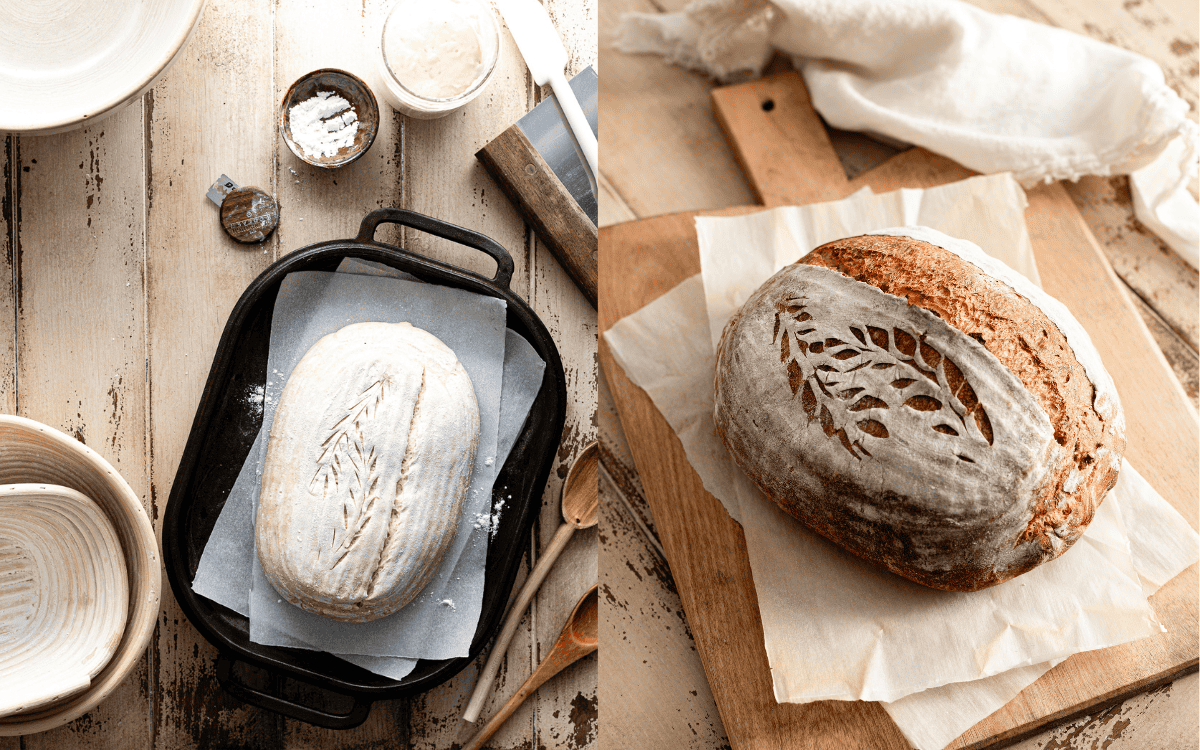
Tips from Hannah's test kitchen
- This dough contains a lot of water (about 73% hydration). It’s completely normal for your dough to feel very sticky and difficult to handle right after it’s mixed. Don't panic! Be gentle, use your fingertips during stretch and fold, and keep your hands damp to make it easier to handle.
- Although I love how yeast speeds things up, I had better results using cold water during testing. It slows down fermentation, but it gives the dough more time to develop flavor and the payoff is worth it.
- This bread works really well as a sandwich loaf too check out How to Bake Bread in a Loaf Pan in my post.
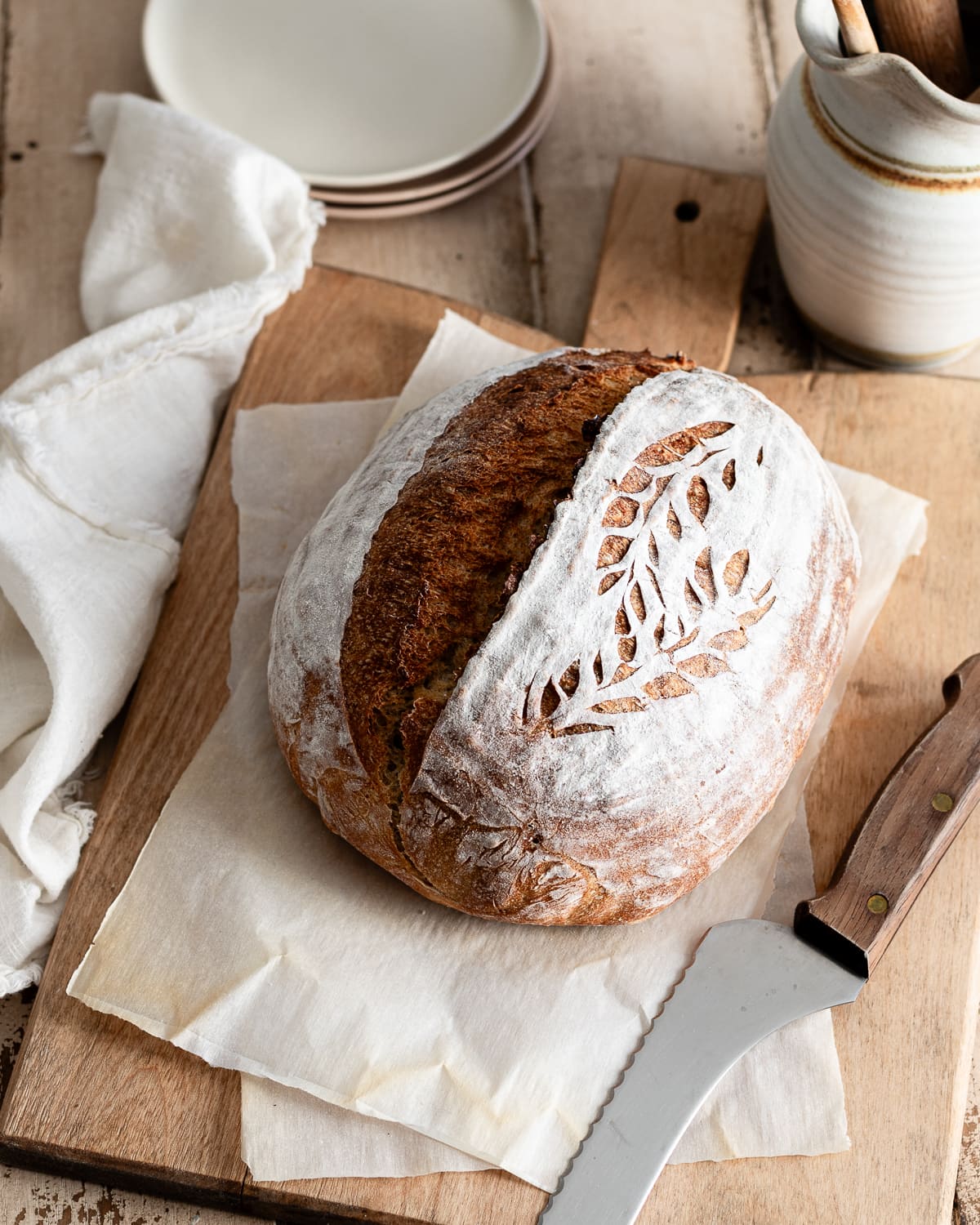
Want to learn how to create beautiful decorative scoring patterns on your bread? My sourdough bread scoring guide is a great place to start.
You may also like
Did this recipe rise to the occasion?
★★★★★
Please leave a star rating and a comment. Your feedback helps me create more delicious sourdough recipes. I read and truly appreciate every message.
Don't forget to PIN this recipe on Pinterest to save it for later!
Thank you for your support!
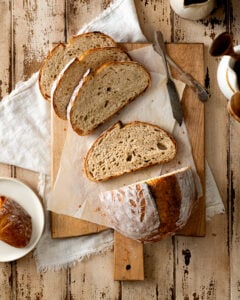
Easy Sourdough Discard Bread Recipe
This section may contain affiliate links
Ingredients
- 7 grams active-dry yeast
- 226 grams water
- 14 grams cane sugar
- 113 grams sourdough discard
- 180 grams bread flour
- 90 grams all-purpose flour
- 60 grams whole wheat flour
- 7 grams salt
Click US Customary to view volume measurements
Instructions
- Make the dough: Mix the water, active-dry yeast, and sugar in a mixing bowl. Allow the mixture to bloom until it smells yeasty and looks bubbly.7 grams active-dry yeast, 226 grams water, 14 grams cane sugar
- Fold in the sourdough discard, bread flour, all-purpose flour, whole wheat flour and salt until no traces of dry flour remain. Cover the bowl with plastic wrap and let the dough rest for 10 minutes.113 grams sourdough discard, 180 grams bread flour, 90 grams all-purpose flour, 60 grams whole wheat flour, 7 grams salt
- Stretch and fold: After the rest period, complete 3 sets of stretch and folds in 15-minute intervals.
- To complete a stretch and fold, with the dough inside your bowl, pick up the side of the dough closest to you using your fingertips. Stretch the dough out as much as you can without it tearing and fold it over itself. Turn the bowl 90 degrees and repeat 3 more times.
- Cover the bowl with plastic wrap. Set it in a warm place and let the dough rest for 15 minutes.
- First rise: Let the dough rise at room temperature until doubled in volume. The dough should double in volume and appear bubbly, about 10 to 15 minutes.
- Prep: Preheat the oven to 475 F with a Dutch oven inside.
- Shape: Coat a banneton with rice flour (see note*). Shape the dough into a boule or a batard.
- To shape your dough, turn the proofed dough on a clean work surface. Flatten the dough out into a rectangle. Fold the side closest to you towards the center and the top of the dough over the bottom flap. Fold the sides over each other
- Flip the dough and round it into a boule or roll it into a batard. Place the dough into a prepared banneton with the seam side up.
- Second rise: Cover the banneton with plastic wrap and let the dough rise until puffy and well risen, about 30 to 45 minutes.
- Score: Transfer the dough to a piece of parchment paper with the seam-side down. Score the dough.
- Bake: Place the dough with the parchment paper inside the hot Dutch oven. Bake the dough covered for 25 minutes and uncovered for 10 to 15 minutes.
- Enjoy: Transfer the baked loaf to a cooling rack. Let the bread cool for at least 2 hours before slicing.
- Store: This bread will store well for up to a week in an airtight container at room temperature.
Tips
These recipes were developed and tested using grams for precise measurements. To increase your chances of success, I recommend investing in a kitchen scale. I've included rough volume estimates (in tablespoons and cups), but they might not be totally accurate.
Remember all ovens are unique, these recipes were tested in my oven which runs cooler than others. You might need to lower the temperature if your bake appears to be browning too quickly. Monitor your bake closely and make adjustments if needed.
Notes
Nutrition
I am not a nutritionist or dietitian, any nutrition information provided is an estimate.


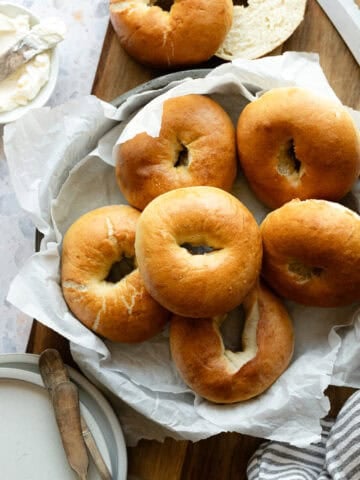
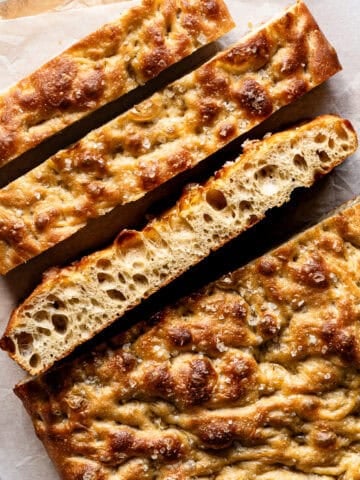
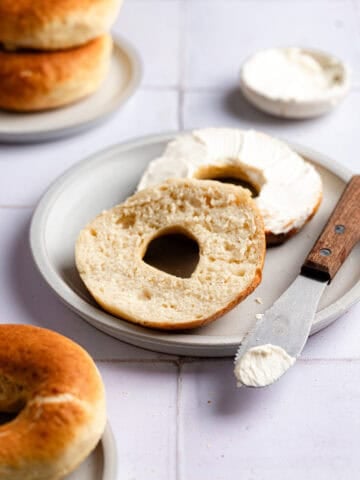
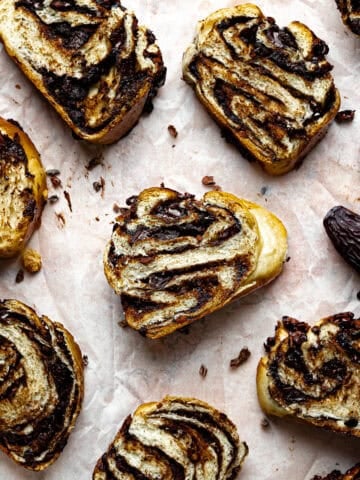
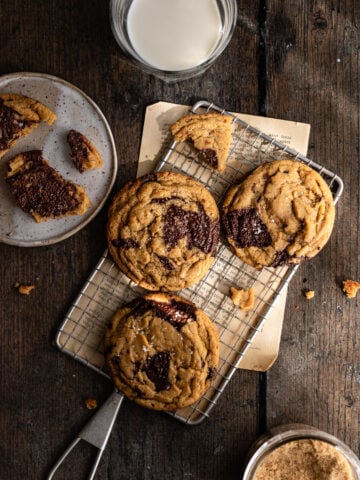
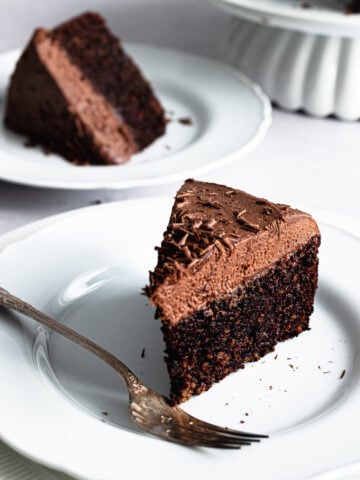
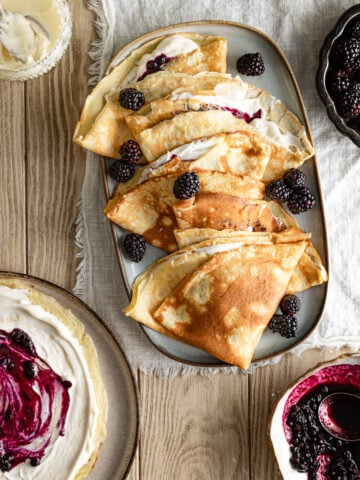
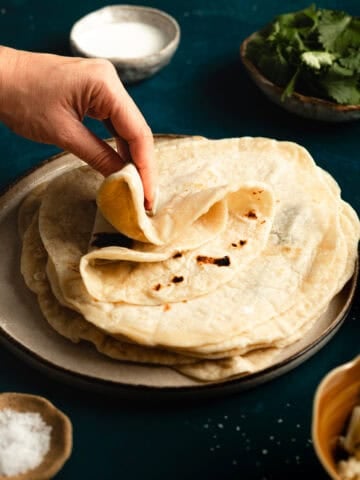
Terri Metcalfe says
Oh my god, this is not going to last long - amazing flavor, texture, just superb! I didn’t have time to bake it initially as I had to rush out so it was left in the fridge for 5 hours at step 11. Unreal!
Hannah Dela Cruz says
So happy you loved them! The long fermentation must have made the flavor incredible.
Terri Metcalfe says
It’s become quite a feature in our house over the last few weeks!
Della B. says
Last question, does it matter how weak your discard is? For example, discard I saved in the freezer.
Hannah Dela Cruz says
You may want to let your discard warm up a bit from frozen since that may lower the temp of your dough too much.
Della B. says
Thank you Hannah! I am going to do this!!
Della B. says
I assume you can still do an overnight 12-hr. cold proof and bake directly from the fridge like a traditional sourdough for better flavor?
Hannah Dela Cruz says
Yes! That should work just fine.
Whitney says
i love this recipe so much. thank you!
Hannah Dela Cruz says
Thank you so much! I am so thrilled that you enjoy it!
Reena says
Love this recipe. So easy to make. This was my 4th attempt at making a sourdough bread. I think using the discard was easier. Thank you for this recipe.
Hannah Dela Cruz says
You're so welcome!
Mike R says
HOLY SMOKES THIS IS GOOD. I just made my third loaf and I kind of wish my oven was big enough to do 10 at a time. Thank you, Hannah, for such a great recipe. This is exactly why I prefer to make my own bread and how I'm going to use my starter discard.
Mike
Hannah Dela Cruz says
Hi Mike! So great to hear that you loved the bread. Your excitement about the recipe shines through and your comment really made me smile. So happy you found a recipe you love in my little corner of the Internet.
April F. says
I hated wasting so much starter discard and found this recipe a few days ago. it's so simple and easy, fairly quick and delicious! I just made my second loaf. The consistency is more like sandwich bread. For those who can't take the crispy crust, just leave the lid on the dutch oven for a little while when it's finished baking and the steam will soften it. Wonderful! Thank you so much for this recipe!
Hannah Dela Cruz says
So happy you loved the recipe! This is becoming a favorite too, especially when I'm too busy to plan ahead for a huge sourdough bake.
JoAnne says
I plan to make this bread in a day or two. Can I substitute orange juice for the water?
Thanks.
Hannah Dela Cruz says
Yes! But the orange juice may not impart the flavor you desire. To get an orange flavor you'll most likely need to add zest or orange extract for a more intense flavor.
Bethany says
Do I need to add sugar? Or could I use honey instead (the same amount)? Thank you! The recipe looks great and I'm eager to try it...
Hannah Dela Cruz says
You can use honey!
Anne says
Hi Hannah, thanks for posting this recipe! This is a great way to use up sourdough discard (mine is a rye starter) and it doesn’t take too long to make. I left out whole grain flour and used 200g of bread flour and 130g of AP flour. I did 4 sets of stretch and fold. Used an 8x4 loaf pan and baked with another 8x4 loaf pan on top to trap steam. Baked at 425 covered for 25 minutes and 10 minutes uncovered (although 5 minutes would have been fine in my oven) to brown. Came out really well!🙂
Hannah Dela Cruz says
Those sound like great substitutions! I'm glad you used a little bit of AP since I think it really improves the texture of bread. Thank you for your detailed notes!
Anne says
Hi! If I make this recipe in a loaf pan, should I use 8x4 or 9x5 loaf pan? Looking forward to trying this out. 🙂
Hannah Dela Cruz says
Hi Anne this recipe will fit in both! Make sure you add steam to your oven if you are baking with a loaf pan.
Here's how to do it if you've never done it before: https://makeitdough.com/can-you-bake-sourdough-in-a-loaf-pan/
Sherry says
I am getting ready to make this, but have a question. Can bread flour be used for the whole recipe instead of part of it whole wheat flour?
Hannah Dela Cruz says
Yes. That would work or you could also use all-purpose flour.
Lala Chan says
I've found it, my go to sourdough discard bread. I've made it a few times now, experimenting on my oven temp as my oven runs warmer than most. Thank you for this recipe.
Hannah Dela Cruz says
Yay! So happy that you've met your match. Thank you for the feedback.
Laurel says
I made my first loaf of sourdough with this recipe…AMAZING!!! Thank you so much for posting this recipe and photos to help with the steps. My bread came out so beautiful. Like you said about your oven running cooler than most, I did 25 mins covered and then 5 mins uncovered in my Dutch oven and it was perfect!
Hannah Dela Cruz says
So glad you loved the recipe!!! Proud of you!
Rachael says
I'm new to the sour dough world. what is the difference in the different flours used? would it hurt to just use bread flour? I tried the recipe and my dough was very dense and did not want to stretch. then after it was done, the bread was very dense and the bottom crsut was incredibly hard to cut through.
Hannah Dela Cruz says
Hi Rachael - flour is the most important part of a recipe and using over another makes a huge difference. Check out my blog on flour to find out more: https://makeitdough.com/best-flour-for-sourdough/.